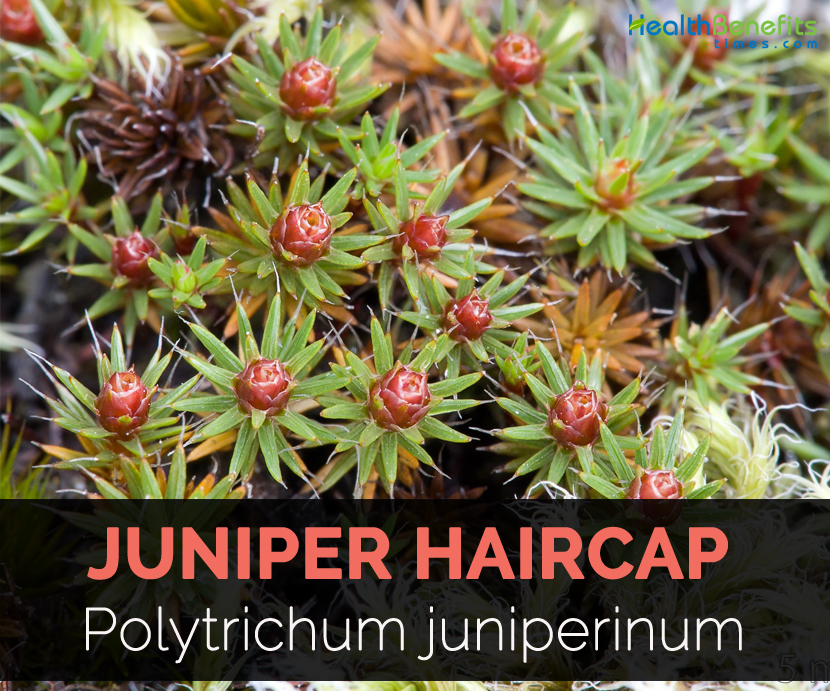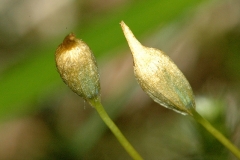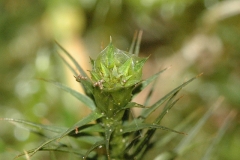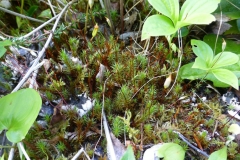| Juniper Haircap Quick Facts | |
|---|---|
| Name: | Juniper Haircap |
| Scientific Name: | Polytrichum juniperinum |
| Shapes | Oblong, 4-sided |
| Name | Juniper Haircap |
|---|---|
| Scientific Name | Polytrichum juniperinum |
| Common/English Name | Ground Moss, Robin’s Rye, Bear’s Moss, Juniper haircap, Juniper polytrichum moss |
| Name in Other Languages | Danish: Ene-jomfruhår; German: Wacholder-Widertonmoos; French: Polytric genevrin, Polytric genévrier, Polytric à feuilles de genévrier; Dutch: Zandhaarmos; Swedish: Enbjörnmossa, En-björnmossa, Enmossa; English: Juniper haircap moss |
| Plant Growth Habit | Evergreen and perennial |
| Stem | 1-10 cm tall |
| Leaf | Linear to linear-lanceolate, 4-8 mm long |
| Medicinal part | The whole plant |
| Fruit shape & size | Oblong, 4-sided |
Leaves
Leaves are 4-8 mm long, wide spreading when moist and upright spreading when dry. Edges are toothless; tip extends into short, toothed and reddish bristle point.
Sporophytes
Sporophytes are common. Stalk is upright, wiry, reddish about 2-6 cm long. A capsule is reddish brown, four sided, vertical, 2.5-5 mm long and becomes horizontal with age and is puckered at base. It has short and blunt teeth around capsule mouth. Capsule hood long with hairs and covers entire capsule.
Uses
As a remedial agent this plant has been unnoticed but is nevertheless valuable. Professor King, of Cincinnati, says: “A strong infusion of this plant taken in doses of four tablespoonfuls every ½ hour, has removed from dropsical patients from 20 to 40 pounds of water in the space of twenty-four hours.”
Very useful in urinary obstruction and suppression, fevers and inflamations. Can be used for the most sensitive conditions, as the acceptability is met without stomach rebellion. Can be used with other hydragogue cathartics with decided advantage.
Dose
1 teaspoonful to 1 cup of boiling water. Drink 1–2 cupfuls a day, a few swallows at a time. Of the tincture, ½–1 fl. dram.
Medicinal uses
- The whole plant is diuretic.
- An infusion is effective for dropsy especially when used with hydrogogue cathartics.
- It is used for treating urinary obstructions, gravel.
- Use it in form of herb tea to treat kidney stones.
References:
https://www.itis.gov/servlet/SingleRpt/SingleRpt?search_topic=TSN&search_value=15762#null
https://www.illinoiswildflowers.info/mosses/plants/jnp_haircap.html





